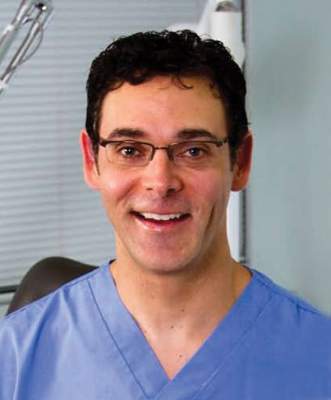AT THE ODAC CONFERENCE
ORLANDO (FRONTLINE MEDICAL NEWS) – For patients who want to get rid of scars, consider using laser treatment for speedy and effective removal, said Dr. Joel L. Cohen , a dermatologist practicing in Englewood, Colo.
“I do spend a fair amount of my time doing [laser treatments] and I do use a lot of these laser modalities,” Dr. Cohen said at the Orlando Dermatology Aesthetic and Clinical Conference. “We have them in aesthetic practices, and we have them for other things we can do, such as trying to minimize scars.”
For laser removal of a recent surgical scar, Dr. Cohen recommended the 585-nm pulsed dye laser, citing a 2010 studyof 20 adults, which found that both long- and short-pulse dye lasers had no significant difference in their ability to effectively improve the appearance of surgical scars. After sutures were removed, sections of the postoperative scar of each patient were treated with the short-pulse 585-nm laser and the long-pulse 585-nm laser once a month for 3 months, and one section was left untreated to serve as controls. The investigators found that the sections treated with the laser demonstrated a statistically significant overall average improvement in appearance, as measured by the Vancouver Scar Scale, of 92% and 89%, vs. 67% for the untreated areas ( Lasers Med Sci. 2010 Jan;25[1]:121-6 ).
For atrophic scars, fractional laser photothermolysis is considered the preferred method in a number of studies. In a 2007 study of 53 patients with mild to moderate atrophic facial acne scars, a 1,550-nm erbium-doped fiber laser was found to improve the appearance of scars safely and effectively in most of the patients ( Dermatol Surg. 2007 Mar;33[3]:295-9 ). After three monthly treatments, almost 90% of the patients has clinical improvements averaging 51%-75%, according to the study results.
In addition, for traumatic scars, optimal treatment is via use of ablative fractional laser resurfacing, Dr. Cohen said. This approach was also mentioned in a 2014 consensus statement , which said that laser scar therapy, particularly ablative laser resurfacing, was a promising but underused tool ( JAMA Dermatol. 2014;150[2]:187-93 ).
Importantly, Dr. Cohen advised that laser treatment can be used after traditional grafting, if surgeons and their patients are not satisfied with the aesthetic outcome of an operation.
“We don’t always get great closures,” said Dr. Cohen. “I think we’ve seen some really nice reconstructions done [but] things don’t always go great, and so this is an option” when more traditional approaches, like flaps, are simply not viable.
Preventing or minimizing scar formation
Dr. Cohen also referred to data on preventing or minimizing scar formation with approaches that include botulinum toxin.
“There are some data about using botulinum toxin to chemo-immobilize the area,” he noted, pointing to a 2006 blinded, prospective, randomized clinical trial of 31 patients, which found that botulinum toxin-induced immobilization enhanced healing of forehead wounds and improved the eventual appearance of scars ( Mayo Clin Proc. 2006 Aug;81[8]:1023-8 ). In the study, botulinum toxin or placebo injections were administered into the muscle surrounding the wound within 24 hours after the wound was closed.
Another study, a retrospective chart review of 18 patients published in 2009, had similar results, showing that in patients who undergo facial reconstructions, botulinum toxin can help with wound healing regardless of which type (A or B) is used. When administered intraoperatively during reconstruction post Mohs micrographic surgery, botulinum toxin types A and B were effective in helping wound healing, according to the researchers ( Dermatol Surg. 2009 Feb;35[2]:182-8 ).
Botulinum toxin type A also has been scrutinized in preclinical studies, including one that looked at its effects on the synthesis of cytokines, “in a cell culture model of cutaneous scarring.” This study found no effect of botulinum type A on cell proliferation or on cytokines and growth factors. The researchers concluded that the results did not provide evidence “to suggest a significant therapeutic role of botulinum toxin A injections for cutaneous wound healing beyond chemoimmobilization” ( Arch Facial Plast Surg. 2012 Mar-Apr;14[2]:122-6 ).
Results of another study that looked at the effect of botulinum type A on transforming growth factor beta-1 on fibroblasts that were isolated from a hypertrophic scar suggested that it may be worth studying further as a treatment for hypertrophic scars. ( Aesthetic Plast Surg. 2010 Aug;34[4]:424-7 ).
Dr. Cohen did not report any relevant financial disclosures.






